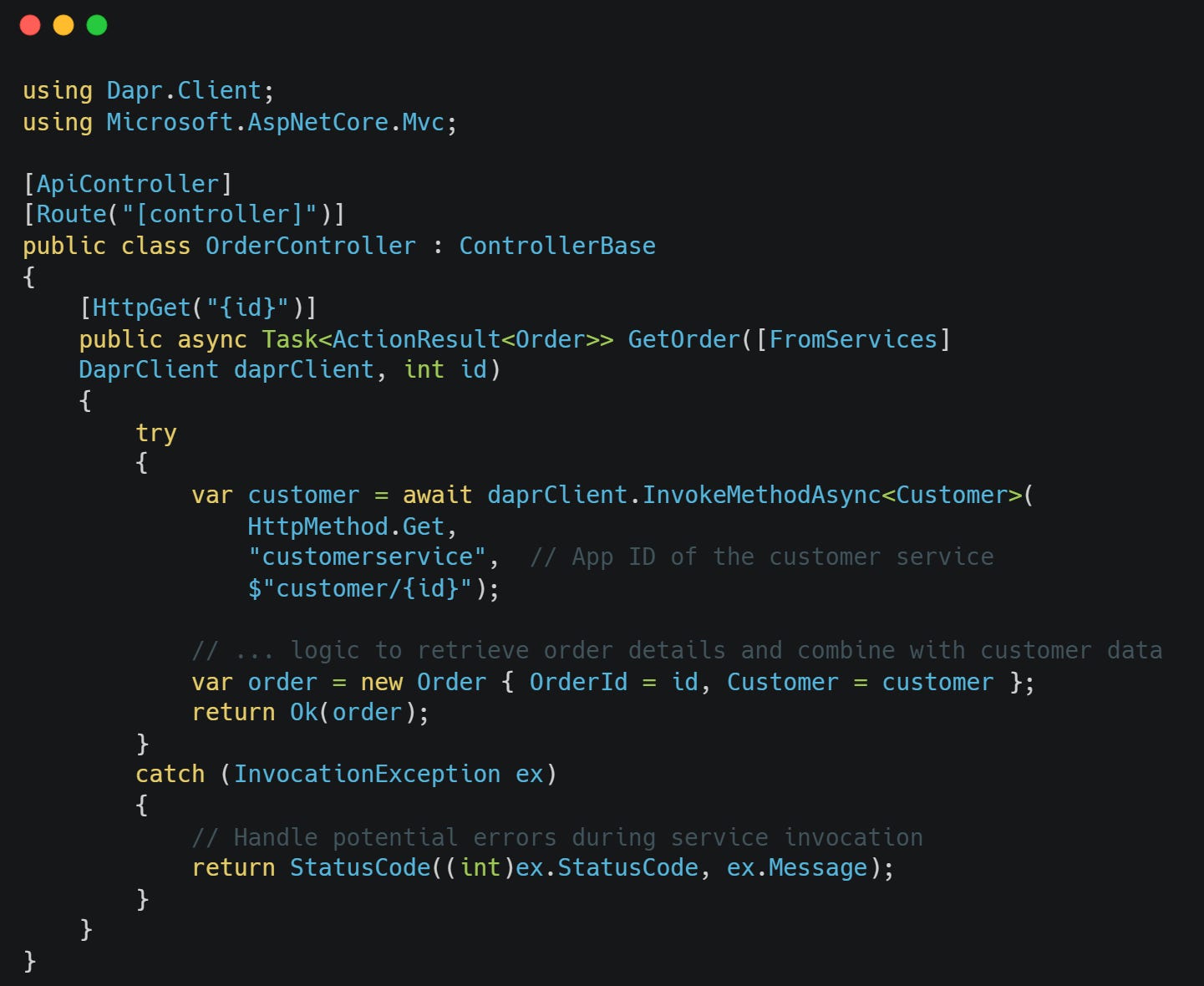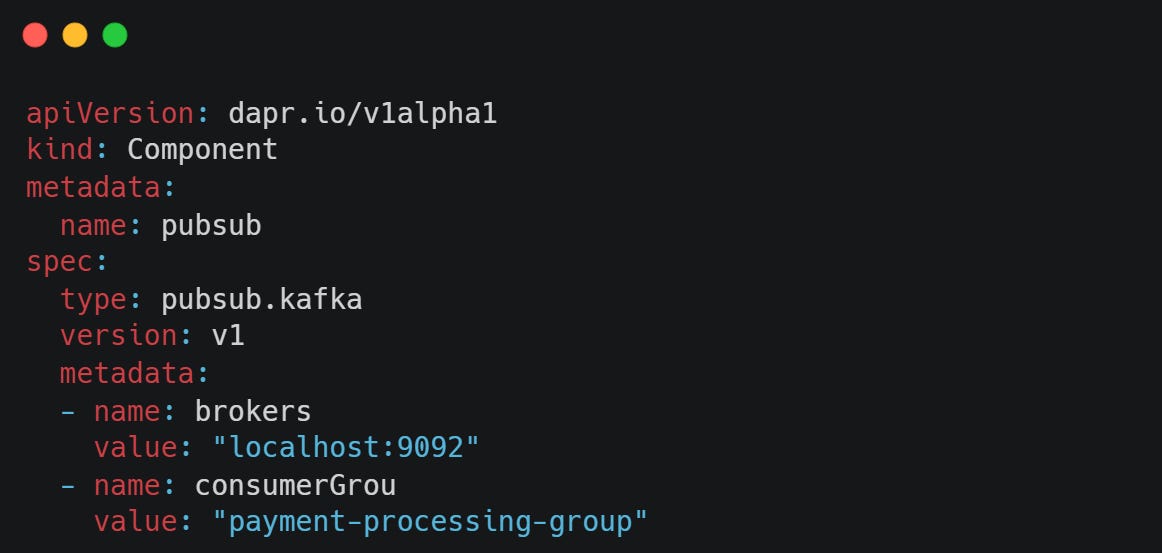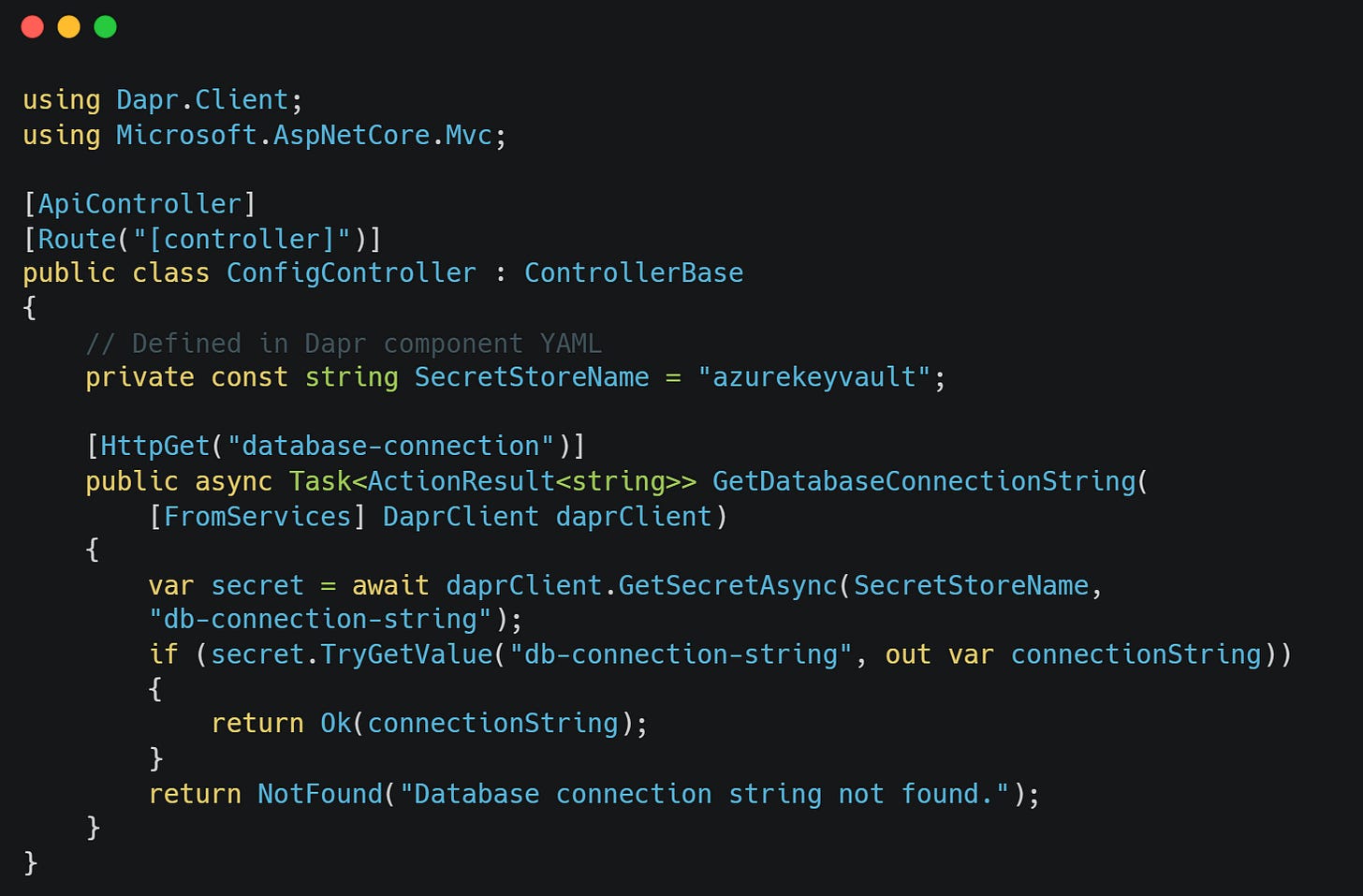Dapr (Distributed Application Runtime) with ASP.NET Core: Mastering Microservices
Introduction
Building robust, scalable, and resilient microservices architectures presents a unique set of challenges. Developers grapple with a complex web of distributed systems concerns, including:
✔ Service discovery: How do services locate and communicate with each other dynamically? ✔ State management: How do we manage data consistently across distributed services? ✔ Pub/Sub messaging: How can services communicate asynchronously through events? ✔ Distributed tracing: How do we monitor and debug requests that span multiple services? ✔ Secret management: How do we securely handle sensitive information like API keys and database credentials?
Dapr (Distributed Application Runtime) emerges as a powerful solution to these complexities. This open-source, portable runtime provides a set of building blocks exposed as sidecar processes, effectively abstracting away the underlying infrastructure and allowing developers to focus on their core business logic.
In this comprehensive guide, we will delve deeper into Dapr and its integration with ASP.NET Core, covering:
✅ A thorough understanding of what Dapr is and its architectural principles ✅ Detailed steps for integrating Dapr seamlessly with ASP.NET Core applications ✅ Exploring advanced concepts and configuration options for Dapr building blocks ✅ Illustrative real-world use cases demonstrating Dapr's capabilities ✅ In-depth discussion of best practices, common pitfalls, and anti-patterns to avoid ✅ A closer look at performance considerations and component choices ✅ A practical checklist to get you started with Dapr and ASP.NET Core
1. What is Dapr? Unveiling the Distributed Application Runtime
Dapr is an open-source, portable runtime that revolutionizes microservices development by offering a suite of sidecar-based APIs designed to tackle the inherent complexities of distributed systems. Its platform-agnostic nature allows you to build microservices that can run on various environments, from local development machines to Kubernetes clusters and beyond.
Key Features: Empowering Your Microservices
2. How Dapr Works with ASP.NET Core: The Sidecar Advantage
Dapr operates as a sidecar, a separate process that runs alongside your ASP.NET Core application. This sidecar exposes Dapr's building block APIs via standard HTTP and gRPC endpoints. Your application interacts with the local Dapr sidecar, which in turn handles the underlying infrastructure interactions. This architecture offers several benefits:
Language Agnostic: Your ASP.NET Core application can leverage Dapr regardless of the specific .NET version or libraries you are using.
Simplified Development: Developers don't need to embed SDKs for various infrastructure components directly into their application code.
Improved Focus: You can concentrate on your business logic while Dapr handles the distributed systems complexities.
Setting Up Dapr in .NET: Your First Steps
Install the Dapr CLI: The Dapr Command Line Interface (CLI) is essential for managing Dapr instances, deploying applications, and interacting with the Dapr runtime.
# For macOS/Linux
curl -fsSL https://raw.githubusercontent.com/dapr/cli/master/install/install.sh | bash
# For Windows PowerShell
powershell -Command "iwr -useb https://raw.githubusercontent.com/dapr/cli/master/install/install.ps1 | iex"Initialize Dapr Locally: This step sets up the Dapr control plane components on your local machine (if you haven't already).
dapr initAdd the
Dapr.AspNetCoreNuGet Package: This package provides helpful extensions and integration for using Dapr within your ASP.NET Core application.
dotnet add package Dapr.AspNetCoreRun Your ASP.NET Core Application with Dapr: When running your application with Dapr, you use the
dapr runcommand, specifying an application ID (--app-id) and the port your application is listening on (--app-port).
dapr run --app-id orderservice --app-port 5000 dotnet run3. Core Dapr Building Blocks in ASP.NET Core: A Deeper Dive
Let's explore the core Dapr building blocks and how to leverage them within your ASP.NET Core applications.
A. Service Invocation: Seamless Inter-Service Communication
Service invocation simplifies communication between your microservices by abstracting away the need to know the exact location (URL and port) of other services. Dapr handles service discovery, load balancing, and even retries.
Advanced Service Invocation:
gRPC Invocation: Dapr also supports gRPC for more performant and strongly-typed communication. You can configure your services to expose gRPC endpoints and invoke them using the Dapr client.
Middleware Pipelines: Dapr allows you to configure middleware pipelines for service invocation, enabling cross-cutting concerns like authentication, authorization, and logging.
Resiliency Policies: Dapr integrates with resilience libraries like Polly, allowing you to define retry policies, circuit breakers, and timeouts for your service-to-service calls.
B. State Management: Persisting Data in a Distributed World
Dapr's state management building block provides a consistent way to store and retrieve state across various state stores without tightly coupling your application to a specific database SDK.
Storing State:
Configuration: You configure the specific state store to use (e.g., Redis, CosmosDB) in a Dapr component YAML file. Dapr abstracts away the underlying SDK complexities.
Anti-Pattern: ❌ Using Dapr state for high-frequency, transactional data operations that require strong consistency guarantees across multiple entities. For such scenarios, a dedicated transactional database is usually more appropriate. Dapr state management is ideal for simpler key-value storage and managing the state of individual services.
C. Pub/Sub Messaging: Embracing Event-Driven Architectures
The pub/sub building block enables asynchronous communication between services through topics. Services can publish events to a topic, and other services can subscribe to those topics to receive and process events, fostering decoupling and resilience.
Publishing an Event:
Subscribing to Events:
Configuration: Similar to state management, you configure the pub/sub broker in a Dapr component YAML file.
D. Secrets Management: Safeguarding Sensitive Information
Dapr's secrets management building block provides a secure and centralized way to retrieve secrets from various secret stores, preventing you from hardcoding sensitive information in your application configuration.
4. Dapr + ASP.NET Core: Real-World Use Case
E-Commerce Checkout Flow
Steps:
1. OrderService saves state in Redis. 2. Publishes order_created event. 3. PaymentService processes payment. 4. InventoryService updates stock. 5. NotificationService sends confirmation.
5. Common Pitfalls & Best Practices
✅ Do:
✔ Use Dapr for cross-cutting concerns (not business logic).
✔ Leverage resiliency policies (retries, timeouts).
✔ Monitor with Dapr Dashboard (dapr dashboard).
❌ Don’t:
❌ Use Dapr for simple monoliths (overhead not justified).
❌ Ignore distributed tracing (always enable observability).
❌ Hardcode Dapr sidecar ports (use service discovery).
6. Performance Considerations
Sidecar Overhead: ~2-5ms per call (test under load).
State Store Choice: Redis for speed, SQL for transactions.
Pub/Sub: Kafka for high throughput, RabbitMQ for simplicity
7. Getting Started Checklist
Install Dapr CLI
Initialize Dapr locally (
dapr init)Add
Dapr.AspNetCoreNuGet packageConfigure sidecars (
dapr run --app-id)Implement building blocks (State, Pub/Sub, etc.)
Conclusion
Dapr simplifies microservices by abstracting infrastructure concerns:
✔ Service invocation → No more hardcoded URLs
✔ State management → Switch stores without code changes
✔ Pub/Sub → Event-driven made easy
✔ Security → Centralized secrets












